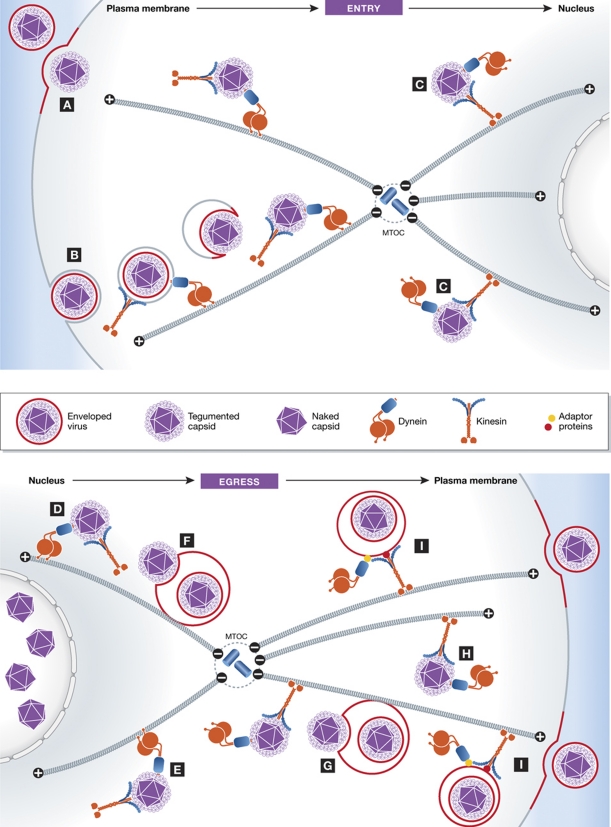Figure 2.
Transport of herpes virus during entry and egress. ENTRY: Depending on the cell type, viruses enter by (A) directly fusing with the plasma membrane or (B) via an endocytic-based mechanism. Regardless of the mode of entry, viruses within endosomes or more usually as non-enveloped capsids probably recruit both kinesin and dynein even though they move in net retrograde (minus end) direction along microtubules towards the nucleus. Depending on the position MTOC and organization of the microtubule cytoskeleton relative to the nucleus, it is also possible that kinesin-1-dependent plus-end directed movement along microtubules (C) may be required for the virus to reach the nuclear envelope. EGRESS: Following their exit from the nucleus, the tegument of non-enveloped capsids recruits kinesin-1 and dynein to facilitate their bidirectional transport on microtubules (D, E). Viruses will move along microtubules until they encounter membrane compartments into which they can bud to form enveloped virions (F, G). The location of these membrane compartments will vary depending on the position of the MTOC and organization of the microtubule cytoskeleton, which will be cell type dependent. Consequently, viral movements towards these membrane compartment may require a net minus-end (dynein) or plus-end (kinesin-1) driven transport depending on the site of envelopment (F, G) with respect to the MTOC. Some viruses, however, may never encounter the right membrane compartment and will continue to move as non-enveloped capsids throughout the cell (E, H). After envelopment, viruses within vesicular compartments (I) will be transported in a net anterograde manner, possibly by kinesin-1, towards the plasma membrane, where they fuse and are released.

